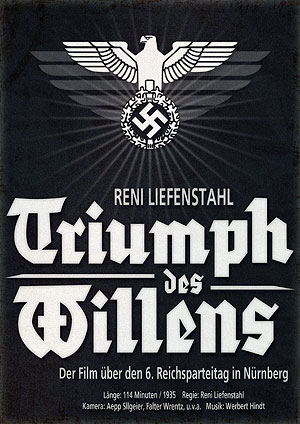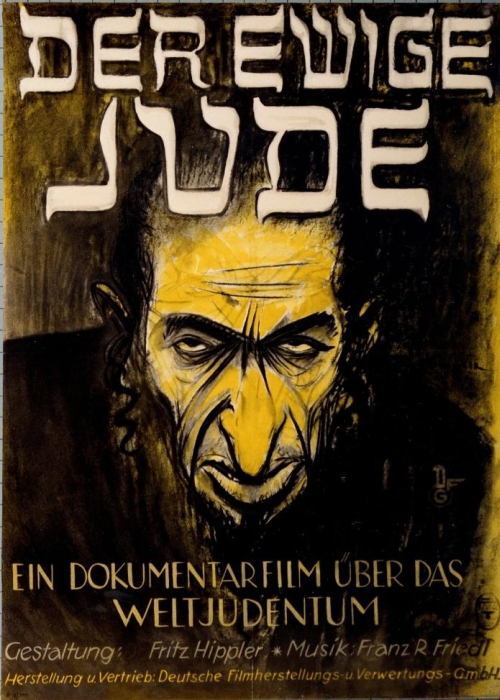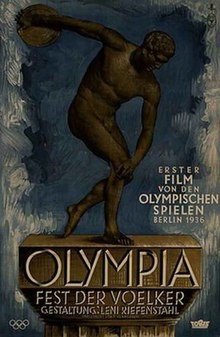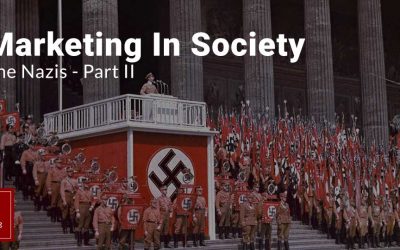The Nazis had extraordinary marketing techniques at their disposal. They used these to spread their message across the country and the globe. One of the essential aspects of the Nazis’ success was their continuous search for new communication channels. They believed in the power of repetition, and hence, they were in a constant investigation of pipelines to replay their propaganda.
The modern-day readers may find the operations of the Third Reich a reflection of an organized commercial production more than a political party trying to spread propaganda. The level of organization was scary and inspirational at the same time.
In Part 1 of the Nazi Marketing in Society series, we investigated if there was a Nazi Brand and its characteristics. In the second part, we covered in more detail Nazi Marketing Strategy, Methodology and also its Output. In this third part, we’re going to cover in detail Nazi Marketing Channels and Nazi Marketing Distribution.
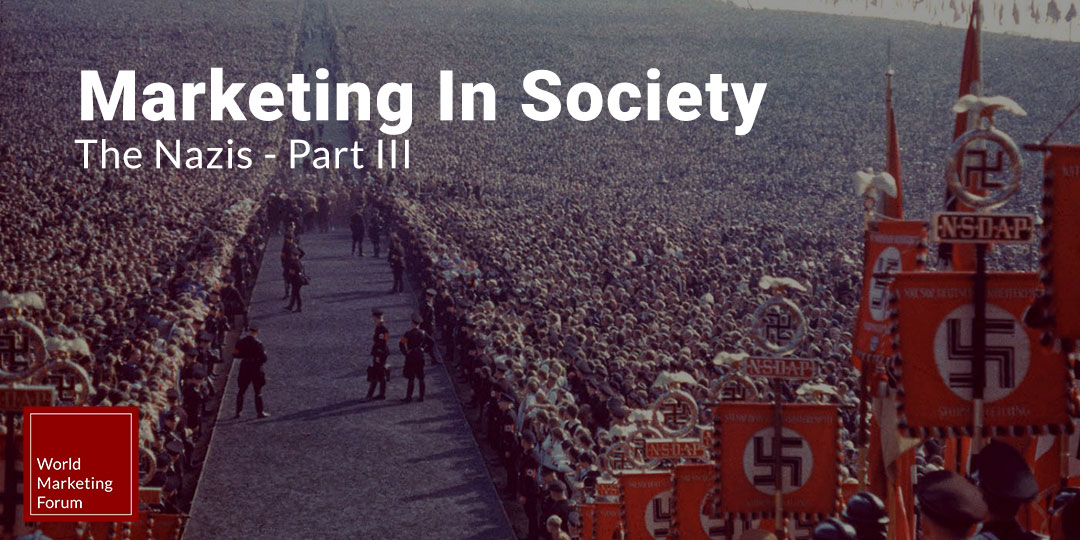
Source: Vitag.es
From Obscurity to Renown
Willi Munzenberg, a German Communist political activist, said that the Nazis had employed “all of the refined methods of large-scale advertisement in the 20th century.”
“The party owed its growth to the application of commercial advertising techniques to the political recruitment, which began an assault on the collective subconscious.” – Karl Bracher
Germany was a democracy then, and the Nazis had to fight in an environment filled with different groups and ideas. All the efforts put in by the other parties ultimately amounted to nothing, but they put up a good fight. Paul von Hindenburg, the then president of Germany, had done great things for his country, and Nazis found a way to combat him without outright insulting him.
It was time for a younger party to come into power, and they did everything they did to achieve that goal.
The Nazis adopted what we now know to be negative campaigning, which is to deliberately spread false negative information about your political rivals to worsen their public image. And we all know if you are good in the public’s eye, you’ve basically won.
Joseph Goebbels – The Mastermind
Joseph Goebbels, the head of Nazis’ Propaganda Ministry, unleashed his propaganda machine on a massive scale against Hindenburg.
The mass media included posters, films, leaflets, slide shows, and gramophone records, all of which suggested that Paul Hindenburg was actually a candidate of the Jews.
The posters themselves were terrifying and arresting at the same time. The imagery was very suggestive of their ideals. Their rivals were shown as caricatures, often demonstrated as tiny men. The religious parties, Jews, the conservatives, and the Communists were represented as cartoonish creatures.
This incessant Nazis assault was matchless and proved to be very effective.
In 1930, Goebbels’ campaign included millions of brochures. He stuck posters everywhere and organized a lot of public party meetings. As a result, twenty-three rival parties gave up.
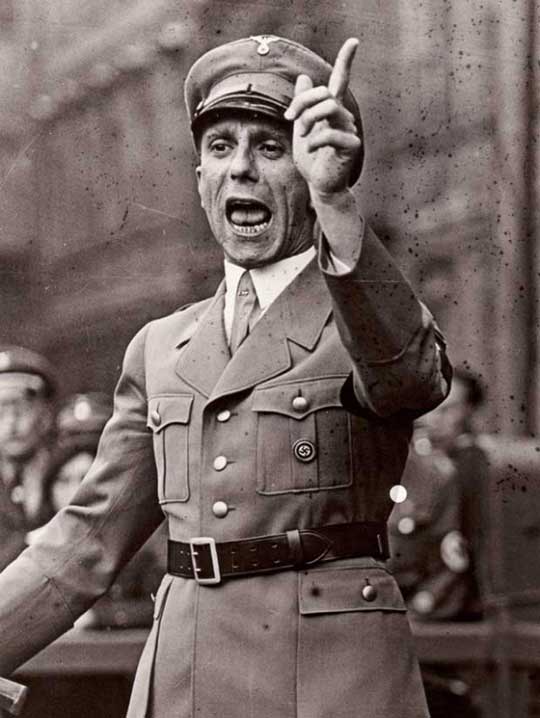
Goebbels – Nazi Propaganda Minister
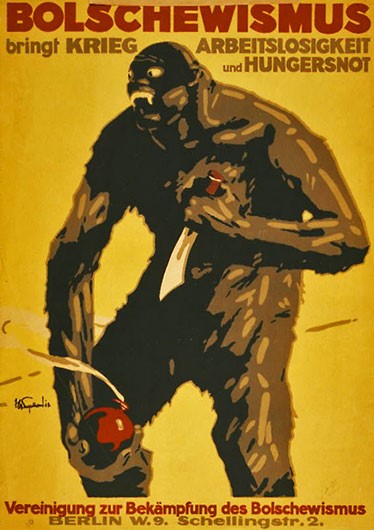
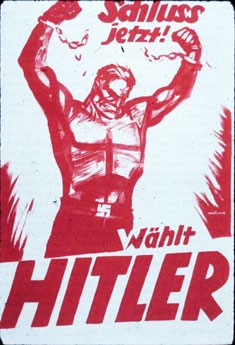
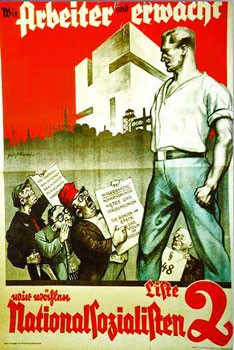
Different Nazis Propaganda Posters. Photo Courtesy: Crestock
The Nazis’ propaganda was filled with associative entities such as Jewish-Bolsheviks, Old Reaction, and greedy Anglo-Saxon Capitalists. These were represented in comic-style posters, but that should not divert our attention from their effectiveness.
The propaganda started with the most apparent channel, newspapers. But when the party gained some ground, and every party member wanted his views spread in the newspaper, the public got bored and stopped reading it entirely. Now, the Nazis turned to other channels to further their cause.
Innovative Nazi Marketing Channels
- The Nazis saw opportunities where others could not. An example is their use of the motor car in their propaganda machine.
- Technical advances such as microphones and loudspeakers benefitted them the most.
- Sixteen colour films and features were invented by the end of the war, and the Nazis adopted them in their campaigning.
- They made several experimental three-dimensional films as well.
- There was propaganda even on the envelopes as well.
- Nazis used postage stamps and considered them a neglected medium of propaganda.
- ‘Wall Newspaper’ combined language and imagery, and an estimated 125,000 wall newspapers were present in nooks and crannies of everyday life in 1943.
- Goebbels deemed television as the medium of public space.
- Propaganda literature was another weapon at the Nazis’ disposal.
- The Nazis even used V1, a prototype cruise missile, as a distribution unit for their leaflets and pamphlets.
In short, the Third Reich did not overlook any potential propaganda medium. Every tool, medium, person, and the surface was considered a potential propaganda tool.
Radio as a Nazi Marketing Channel
Until 1933, Hitler’s media propaganda had nearly no impact on the masses. The marketing channels during that time were an amalgam of old and new print media channels, but they were not without their limitations.
The films had no sound, and radios were not mainstream. But they had the potential to breathe life into a piece of art. Until 1932, there were 4.25 million radios in Germany, a number which would look like sprinkling in the coming years.
Goebbels first employed radio to his cause in February 1933. They only had three cabinet seats, but one of them, the Interior Ministry, was responsible for the radios, and they used this channel as a destructive weapon against their enemies.
“We make no bones about the fact that radio belongs to us and no one else. And we will place the radio in service of our ideology, and no other ideology will find expression here.” – Joseph Goebbles
- Radio became a beneficiary of technical and organizational innovations.
- By 1938, radio broadcasting increased to 20 hours a day, which was only 14 hours a day in 1933.
- Nazis considered it the most means of mass communication as it had the power to touch most of the nation instantly.
- Radio ownership more than doubled in 1938, going from 4.25 million to 9.6 million.
- As the years went by, radio became the most effective propaganda tool for the Nationalists.
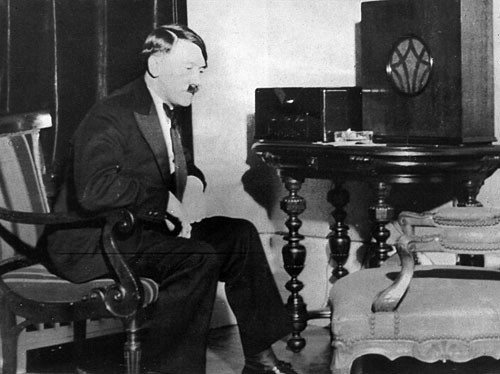
Adolf Hitler is listening to the radio. Photo Courtesy: USHMM
In 1933, 40% of the voters were Anti-Nazi, but the Nazis were in a place of power when they were handed over the responsibilities of the radio. Radio was a regional service, but the Nazis made it national, and it flourished under Goebbels.
He aspired to see radio as a part of everyday life, saying;
“I profess to see the day when every factory, every cinema, theatre, marketplace and square, railway station and every home will be within range of the Führer’s voice.” – Joseph Goebbels
After the radio caught on, the Nazis took it to the next level by ‘The People’s Receiver.’ The Nazis developed a special radio model to spread propaganda unchecked. The special Model 301 was propaganda in itself. It was a throwback to the Nazi victory of 3 January 1933, deemed the most important day in German history by Michael Burleigh, an English author and historian.
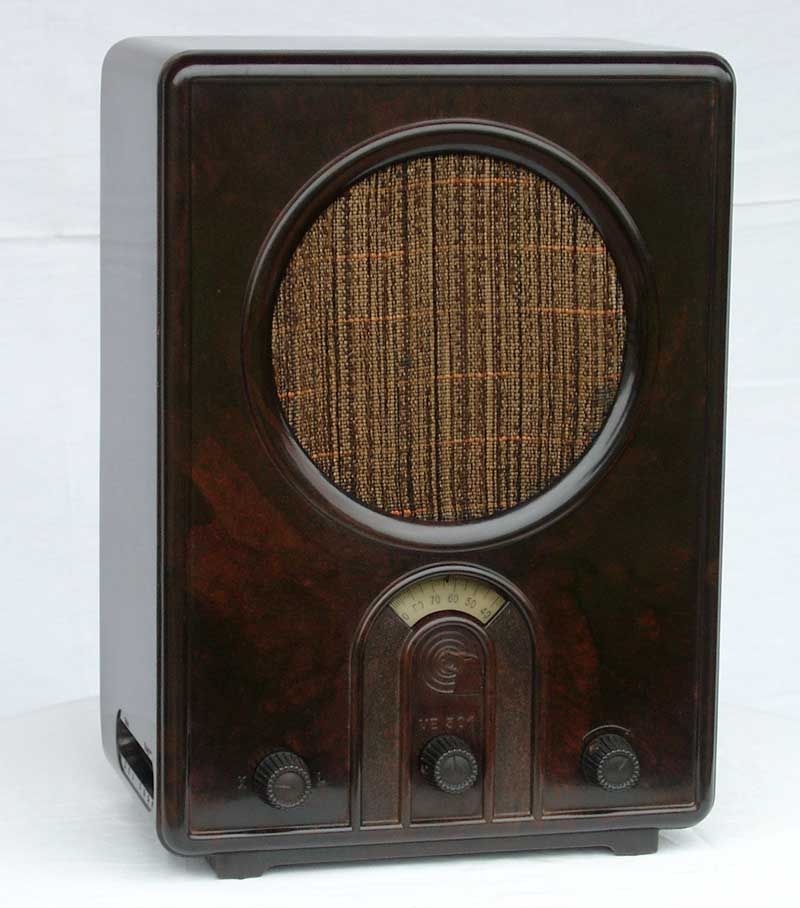
Joseph Goebbels People Radio
However, radio propaganda was not limited to the national level, and foreign propaganda against their global enemies was also carried through radio transmissions.
They had a unique approach to foreign propaganda that involved exploiting pieces of information of specific events and used it to represent a specific classification of people.
They were inclined towards tangible concepts rather than abstract ones as they are more relatable.
- In Lisbon, a neutral European capital, the German government had a retail store in the Chiado shopping district where they sold propaganda.
- Goebbels engaged with the international journalist bodies during the Battle of France and bribed them with hotels and exclusive interviews.
- In Berlin, the Funkhaus station broadcasted in thirty languages, and almost 500 people worked in their foreign languages department.
- They broadcasted in Slovak, Turkish, and Afrikaans, among many other languages.
- BBC deemed German radio as a ‘significant actor’ in the attack on Netherlands and France.
- The American-born Nazi propaganda broadcaster, William Joyce, aired three broadcasts for America every week, and his audience included America, Canada, Australia, New Zealand, and South Africa.
The Nazi ideology was flexible and would change according to their needs. They strived to instil chaos and disharmony globally as they fought global powers. Goebbels took particular joy in recruiting the president of the Indian Congress Party, Subhas Chandra Bose.
‘Free Indian Radio’ started broadcasting daily as an alternative to the British-controlled radio stations. Their broadcast included entertainment and politics mixed with culture and classical music.
Goebbels declared, “We are doing everything possible to pour oil on the fire.”
Newsreels and Documentaries as a Nazi Marketing Channel
Newsreels and documentaries were another communication channel that the Nazis exploited for their political gains. It is not a coincidence that these means of communication rose to fame alongside Hitler. There were Nazis films even in 1920, but they were cheap, unrefined, and amateur.
Hitler was a firm believer in the power of visuals. In his book, Mein Kampf, Hitler wrote, “visual images transmit information instantly, unlike the written word that requires slow reading.”
In November 1930, The Reich Film Office was created. But political films were not new, and Our Hindenburg’s fame (1927) expected the same level of films from the Nazis government. Thus, Joachim Hoffmann said that newsreels were no new fetish.
By 1914, there were 2446 cinemas in Germany, and the government took an interest in propaganda because the World War was going on inconclusively, thus making their first film company, DLG (Deutsche Lichtbild-Gesellschaft).
Newsreels and Documentaries were different from other media because they had to be viewed at a particular place, i.e., the cinema. In the 1930s, there was a massive trend of going to the cinemas often as it had become the most popular leisure activity.
Newsreels were shown as a prologue to the movies; thus, the people had to see them no matter what. There was no sound in the films until September 1930, when the first newsreel that included sound was broadcast. The inclusion of sound offered a new layer of immersion in the cinema experience, and the cinemas became grander.
Eventually, mobile cinemas were created that broadcasted political films even in the most distant rural areas.
Documentaries and Newsreels were the advents of self-announcing propaganda. The documentaries represented an ideal image of the regime. The documentaries were like fairy tales; dramatic and epic. The first director of the British Film Academy, Roger Manvell, said ‘Such scenes are supplemented by shots of the soldiers behind the scenes,’ the handsome young protagonists in Hitler’s drama, ‘idealistic and upward-looking with the sky reflected in their eyes.
Leni Riefenstahl, one of the most innovative film directors of that time, created a perfect amalgam of propaganda and aesthetics. Triumph of the Will (1935) is an ideal example of a film that set new industry standards that apply to this day, you can see the movie here.
- The Nazis used small tidbits in these cinema productions to gain an advantage.
- Nazi leaders sometimes appeared at end films to personally address the audience, such as the end of Baptism of Fire.
- These films were not limited to the German audience either, and the Nazis showed them to other countries’ leaders as well.
- These films allowed them to solve their political problems at a symbolic level, and the Nazis used this medium to an extensive extent.
We gathered reliable websites where you can see the Original Films with English Subtitles. Just click on the images of the posters and you will be redirected to each of them.
The Triumph of Will – This film covers the determination and will of the German people to unite themselves as a people under one leader, and avoid class struggles and fights. It displays the achievements of the nation and its people all together, despite class. It also displays speeches and military parades.
The Eternal Jew – This film was produced to easily convey a point of view concerning the jews and their development in Europe. It was very effective due to combining historical facts with a false narrative that supported the Nazi Point of View. – Disclosure: This film contains hate speech that some might find offensive and should only be viewed by > 18-year-old individuals.
Olympia – This film covers the 1936 Olimpic Games and is an example of joining something pleasant (sports) with politics to create a positive attachment to the viewer.
The Newsreels had a slightly different role as they claimed to be news and their business was the truth. Newsreels and films came together as an integrated product. The news included actual life events, and the films were a fantasy of real life.
The war newsreels were considered special by Hitler and many party propagandists. They represented their dramatic imagery covered by an aura of documentary-style accuracy, thus making them an effective propaganda formula.
In 1941, Hilter said, “For the sake of the future, it is important to preserve the news films of war. They will be documents of incalculable value. New copies of these films will have to be constantly printed, and it would be best to print them on strips of metal so that they won’t disappear….”
In June of 1940, a unified newsreel series, Die Deutsche Wochenschau (The German Weekly Review), was released in the cinemas. These were explicit propaganda that explained war in ideal terms and metaphors. Joseph Goebbels diverted the news from their retreats to their “victories” achieved by combat personnel and aeroplane units. These highly fragmented pieces of information created a sense of a massive “forward momentum” with occasional “tactical retreats.”
- All media propaganda, including The German Weekly Review, revolved around images of leaders, battles, human interest stories, and military music and grandeur.
- The newsreel series was available for export and had buyers within local and international markets.
- By June 1944, this material fed the newsreels across Europe in multiple languages, in 2540 theatres, to an audience of 4.5 million per week.
- The sources of the German Weekly Review were Propaganda Company (PK) units.
- During World War, PK units provided footage from the frontlines to share the exhilaration of war with the public.
- PK units were proper soldiers as well as trained technicians and cameramen.
- A PK unit could consist of about 160 members trained in various disciplines.
These newsreels were, in no capacity, truth-telling devices. Instead, they were a symbolic device with only a passing relation to reality. Later, the Nazis refined these devices using visual editing and added music to instill a new power in the heroic images.
Hilter ‘seems’ to be personally directing the combat units during Poland’s invasion in the film that was shown to the public. The power of Nazis’ propaganda came from their viewers’ delusions.
They believed that the evidence was genuine since the image shows a specific action. In reality, all imagery was edited to create an image of a hero without blood on his hands.
Press and Posters as a Nazi Marketing Channel
Even if the Nazis considered new media such as radio and films as crucial propaganda weapons, they did not overlook the older ways of spreading information, i.e., press and posters.
The newspapers were an old medium and an important one as well.
They had minimum competition, and the vendors did not have diverse perspectives, so they were an attractive medium for propagandists. The Nazi regime ended Germany’s strong newspaper culture.
At the start of the war, newspapers/publications tumbled from 5,000 to 2,000. Ultimately it dwindled to a measly 1,000 newspapers by the end of 1944.
Creating an Official Information Source
The Nazis started their newspaper, Das Reich and in 1944, its circulation had climbed up to 1,400,000. Goebbels’ weekly editorial was published in the newspaper, and it was also broadcast on the radio.
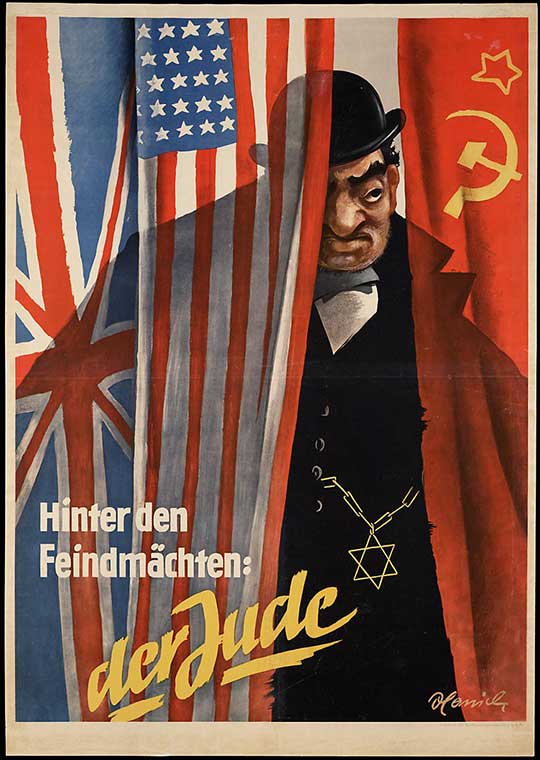
Nazi propaganda poster that reads “Behind the enemy powers: The Jews”
In contrast to newsreels and films, a poster is a single image that will carry the whole message. Thus, a poster must have a resonant image and a powerful phrase.
The Nazis had access to more robust and colourful media such as cinemas and radio, but they still used posters. This is because, unlike cinemas, posters do not give the public a choice of participation. They are always there whether the public wants them or not. They enter our subconscious like uninvited guests, and political ideology seeps into the mass perspective.
The posters made by the Nazis were large, in vivid colours such as red, and with minimal text. The focus was on the name of the party and one concrete message that a person could read from quite some distance away.
After some time, the Nazis even catered a specific style for their posters. It happened to the extent that anyone would recognize, from a mile away, if the Nazis made something or not.
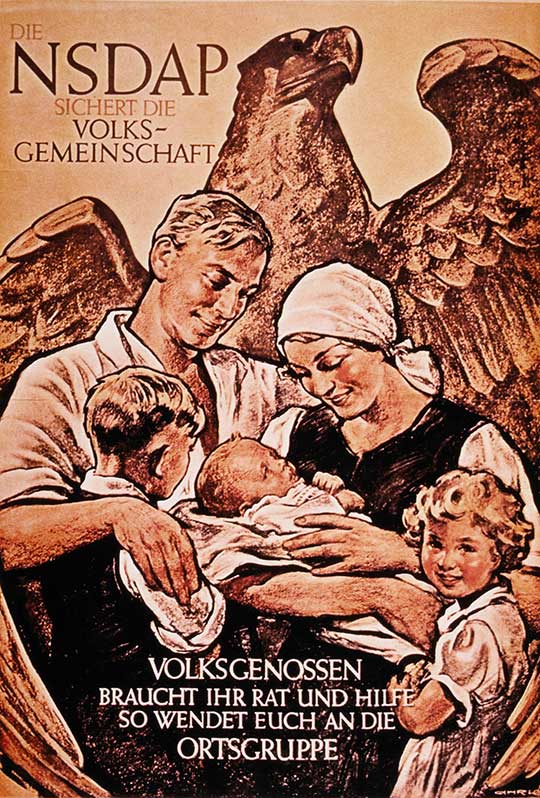
This mid-1930s poster says, “The NSDAP [Nazi Party] protects the people. Your fellow comrades need your advice and help, so join the local party organization
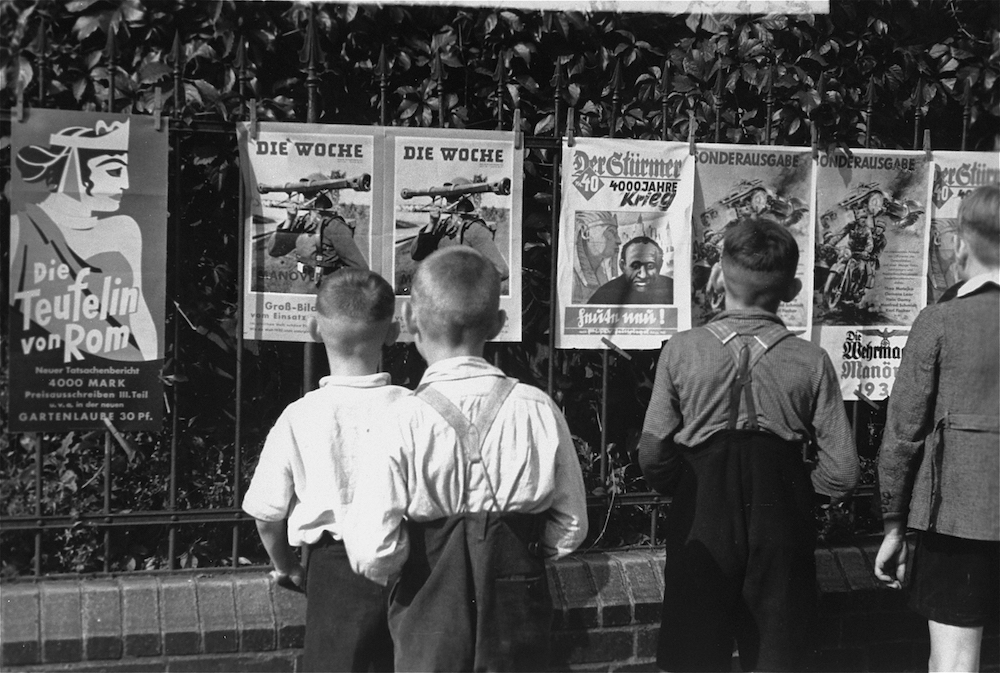
Multiple Nazi propaganda posters put together. Photo Courtesy: USHMM
Conclusion
After transforming their culture into a brand, the Nazis quickly went on to the next step, which was marketing their brand. They left no stone unturned in the matter either. They had their faith in the power of repetition, and that is precisely what they did.
The Nazis were in a constant race to find new means to spread their message, and once they found one, they employed all their resources to use that medium to perfection. They did not hesitate to think out of the box, and they were not afraid of testing new means of communication to consciously and subconsciously further their cause.
There is a lesson for us in their ingenious use of media: to use everything at our disposal to grow our business through an Omnichannel perspective and approach.
Reflection Box
Propaganda has been around for many years and around all factions, but more closely in the ones that seek to impose their will on others by force. Several tactics are employed that consist of positive and negative reinforcement and above all repetition! As Hitler himself put it, repetition and consistency are the keys to success!
Check-list:
- Can you recall your government embracing some of these tactics to manipulate public behaviour and opinion?
- Can you recall your government trying to divide society into groups?
- Can you recall your government rewarding citizens because they belong to a certain group or have certain beliefs?
- Can you recall your government punishing citizens if they don’t subscribe to a certain belief/action/ or have certain characteristics?
- Do you recall your government exceeding its scope and violating your God-given rights of freedom, association/assembly, and private property?
- Do you recall your government claiming unprecedented circumstances to enact legislation for the “common good” that consists in violations of someone God-given rights?
If any or several of the above circumstances took place at any time in any region. You might have a Tyrant (or group of tyrants) in your government. For your own sake and for the sake of your offspring, resist and organize a resistance.
We already had enough Tyrants and Dictators in this world.
